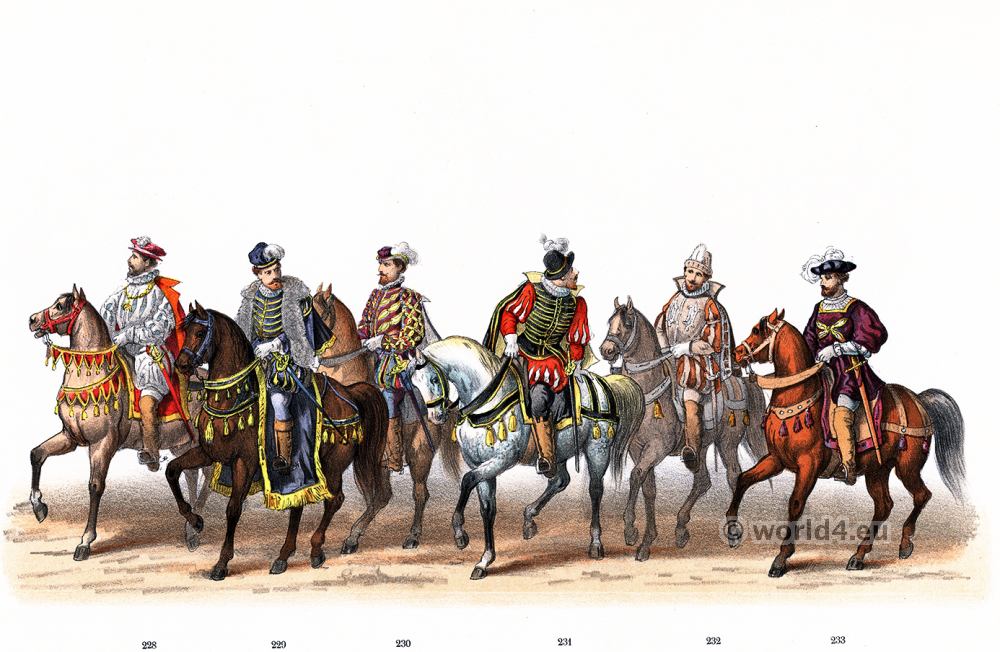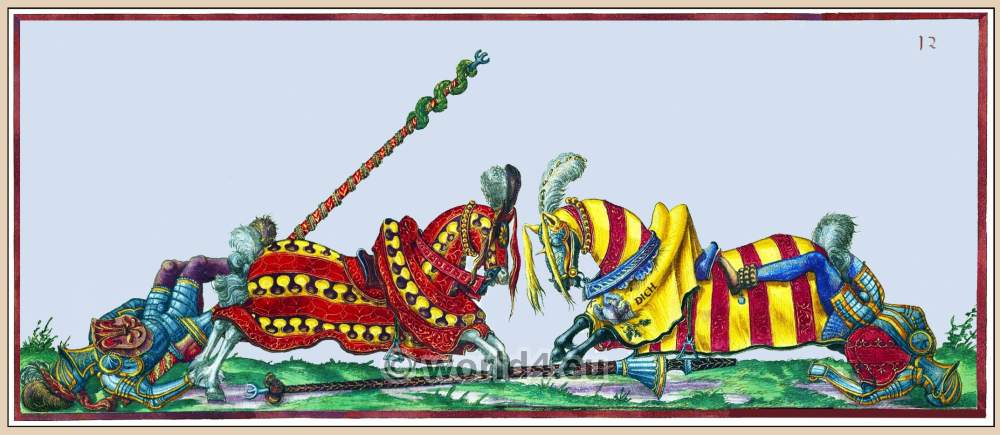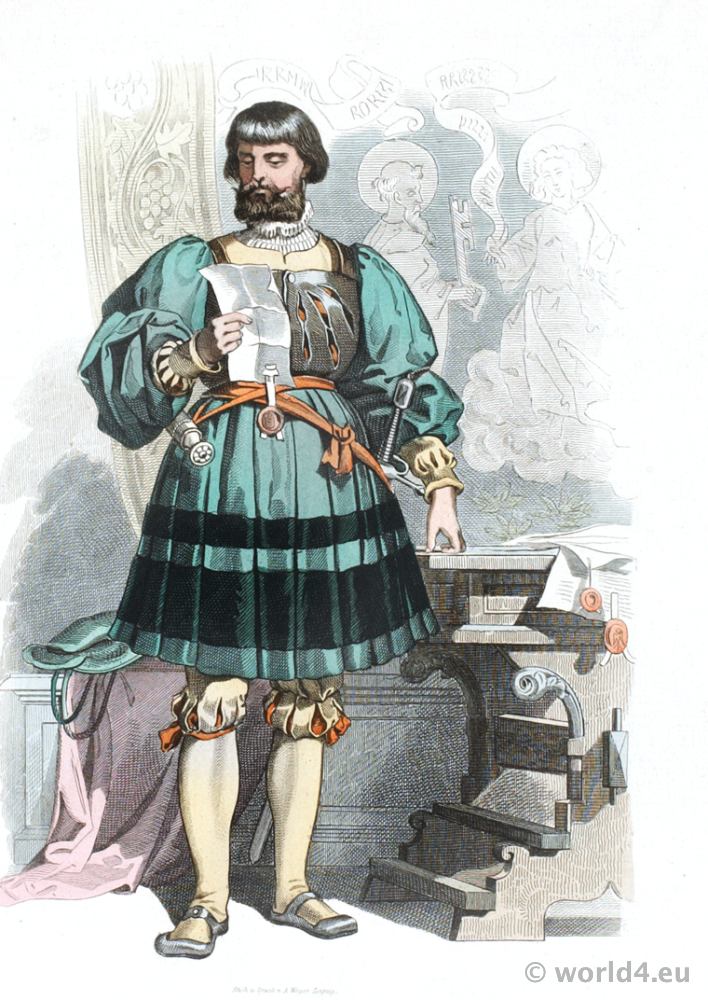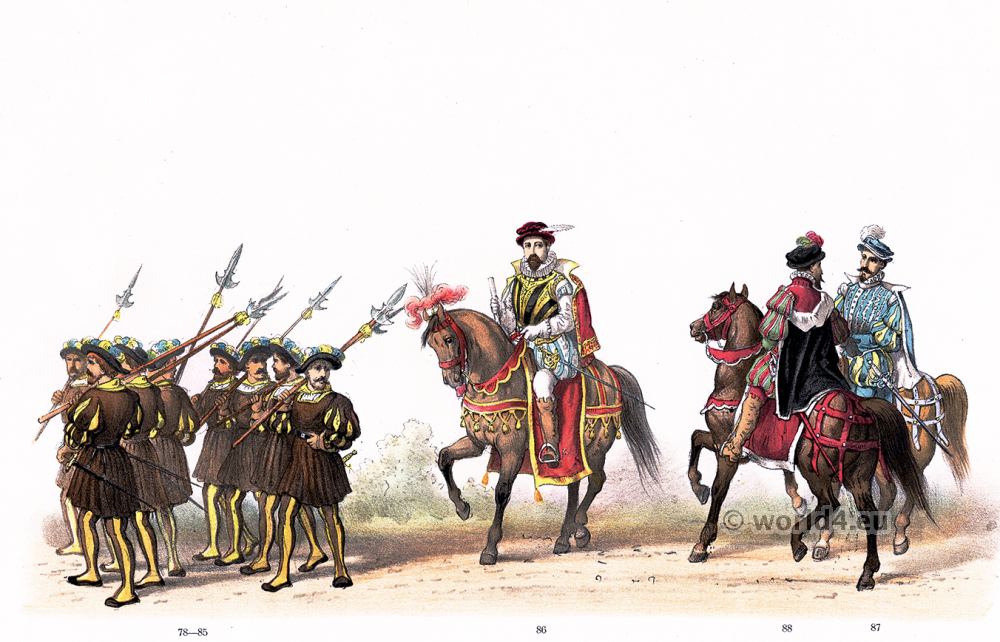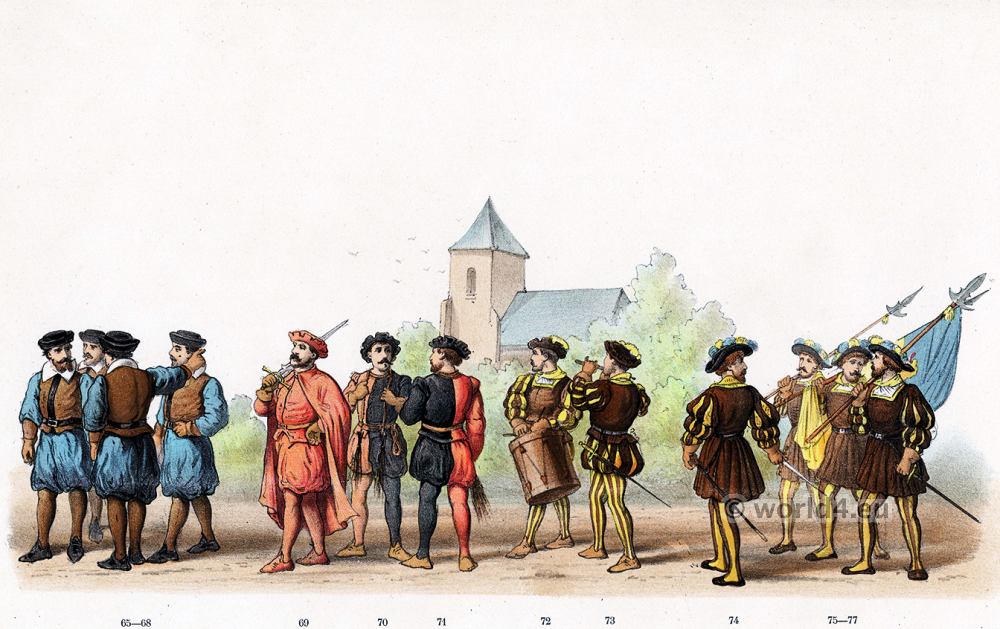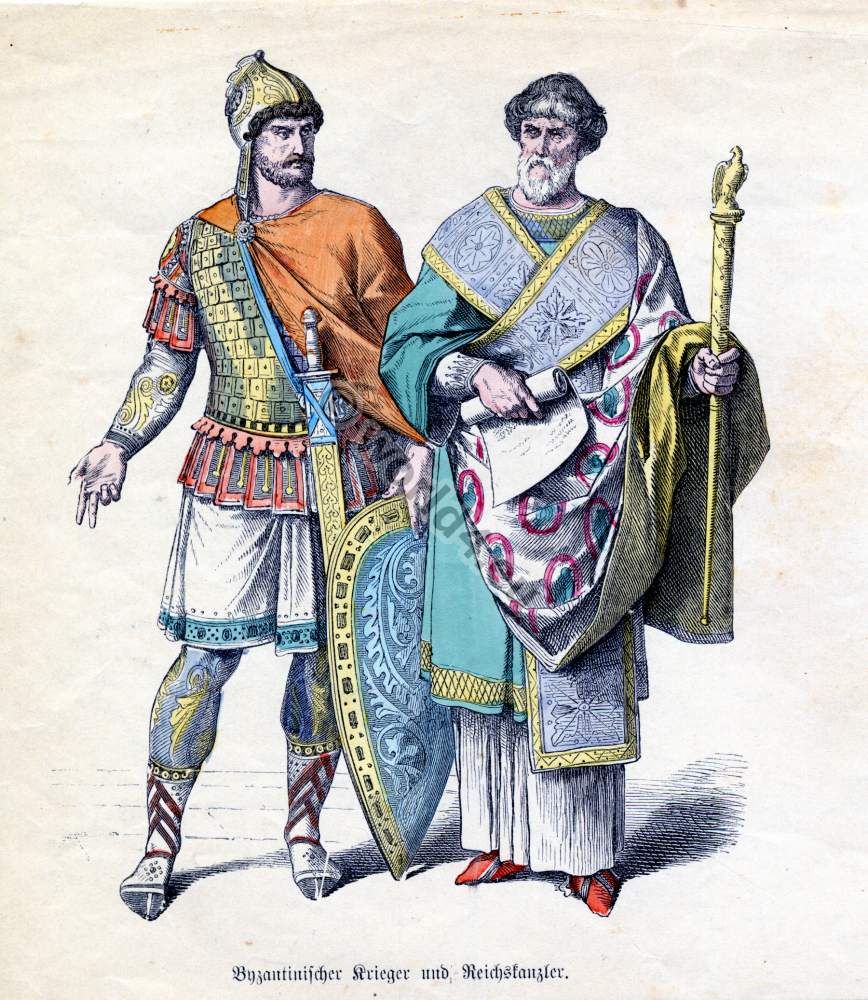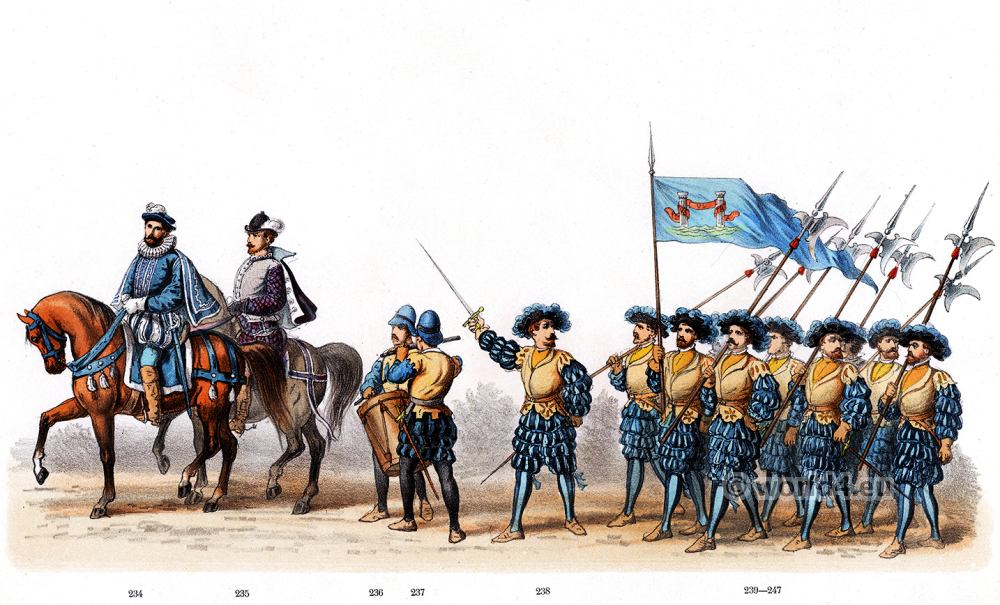Knights of the Order of the Golden Fleece.
228. Jacques, Count of Ligne, Prince of Mortagne, Baron of Wassenaar, Order of the Golden Fleece etc.
229. Nicolaus, count of Salm-Neuburg, Knight of the Order of the Golden Fleece, Austrian Army General, Chamberlain.
230. Antonio Castriota, Duke of Fernandino.
231. Jan, Count of East Friesland, Governor of Limburg.
232. Reinout, Lord of Brederode, Vianen and Order of the golden Fleece.
233. Pontus de Lalaing, Captain-General of Artois, Order of the Golden Fleece.
The Order of the Golden Fleece is a Burgundian order of knights founded in 1430. Based on the model of the knightly order, an acceptance also became a privilege granted by the Emperor of the Holy Roman Empire, the House of Habsburg or the Spanish House of Bourbon, as a reward for merit.
The order’s insignia, a golden ram skin hanging on a collane, acquired independent significance and became the archetype of the modern Order of Merit. In this respect, the Order of the Golden Fleece represents the link between the two modern meanings of the word “order”.
Today there is both the religious branch of the House of Habsburg and the Spanish branch of the Bourbons with their respective Grand Masters Charles Habsburg-Lorraine and King Felipe VI of Spain. The Order of the Golden Fleece is considered one of the oldest and most important orders of knighthood.
Source: Costume cavalcade, has held by members of the Leidsch Studenten Corps, at 24th of June 1890, commemmorating the 300th anniversary of Leyden University, re-living the State-entry of Emperor Charles V (1500-1558), into Nijmegen municipality, the Netherlands, 9th February 1546.

